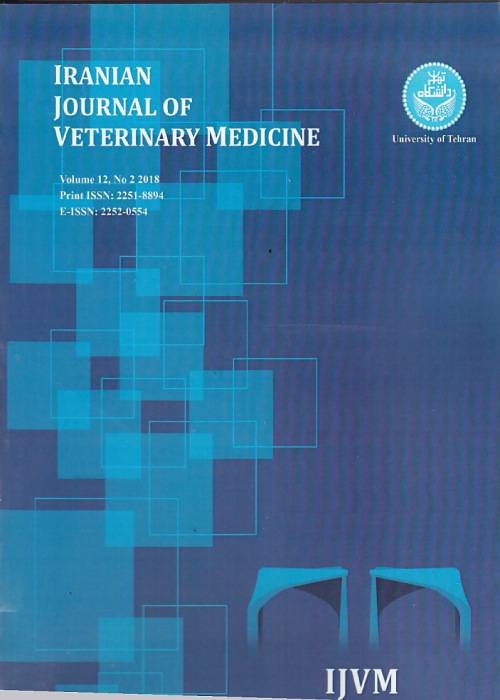Serological and bacteriological study of leptospirosis in dairy herds and feedlot in Tehran suburbs
Author(s):
Abstract:
Background
Leptospirosis is a worldwide zoonosis caused by Leptospira interrogans. Leptospirosis results in decreased milk production, abortion, stillbirth, infertility and mortality, which causes financial loss in the cattle industry. Objectives
The aim of this research was to perform a serological and bacteriological study of leptospirosis in 6 industrial dairy herds and 3 feedlots with previous records of leptospirosis in Tehransuburbs in 2011-2012. Methods
For the purpose of this study, 408 blood samples from dairy cattle and 154 blood samples from feedlots were collected using sterile 10ml venoject vacutainers from tail vein. Two months later, 118 urine samples were collected from 20% of the two groups of serological negative and positive animals. All serum samples were serologically tested by microscopic agglutination test (MAT), a standard method for serological diagnosis of leptospirosis. The serum samples were tested for antibodies against five live antigens of Leptospira interrogans serovars: Pomona, Grippotyphosa, Hardjo, Icterohaemorrhagiae and Canicola. Urine samples were used for bacteriological isolation of Leptospira spp. Results
Serological results showed that 228 (40.6%) of animals had a positive reaction against one or more serovars. The most prevalent Leptospira serovars was Pomona 118 (40.3%) and the least prevalent was Canicola 4 (1.4%). The most prevalent titer was 1:100, and the highest titer was 1:1600. Also the most seropositive cases were observed in 3 to 4-year-old cows. Bacteriological results revealed that in 11 (9.3%) urine samples Leptospira spp. were isolated, all taken from one feedlot farm. According to the history taken from each farm, the main risk factors were the presence of rodents and low hygienic conditions of the farms. Conclusions
The results of this study revealed that cows could have a major role in maintaining Pomona, Grippotyphosa and Hardjo serovars; indeed, they are a potential zoonotic risk to slaughter house workers, meat inspectors, milkers and farmers.Keywords:
Language:
English
Published:
Iranian Journal of Veterinary Medicine, Volume:7 Issue: 3, Summer 2013
Pages:
177 to 183
magiran.com/p1217946
دانلود و مطالعه متن این مقاله با یکی از روشهای زیر امکان پذیر است:
اشتراک شخصی
با عضویت و پرداخت آنلاین حق اشتراک یکساله به مبلغ 1,390,000ريال میتوانید 70 عنوان مطلب دانلود کنید!
اشتراک سازمانی
به کتابخانه دانشگاه یا محل کار خود پیشنهاد کنید تا اشتراک سازمانی این پایگاه را برای دسترسی نامحدود همه کاربران به متن مطالب تهیه نمایند!
توجه!
- حق عضویت دریافتی صرف حمایت از نشریات عضو و نگهداری، تکمیل و توسعه مگیران میشود.
- پرداخت حق اشتراک و دانلود مقالات اجازه بازنشر آن در سایر رسانههای چاپی و دیجیتال را به کاربر نمیدهد.
In order to view content subscription is required
Personal subscription
Subscribe magiran.com for 70 € euros via PayPal and download 70 articles during a year.
Organization subscription
Please contact us to subscribe your university or library for unlimited access!



